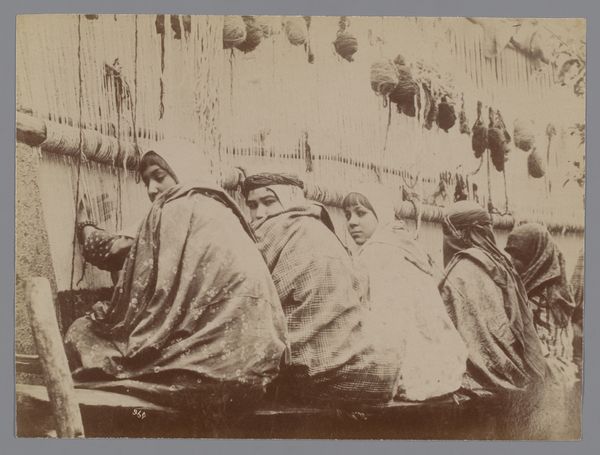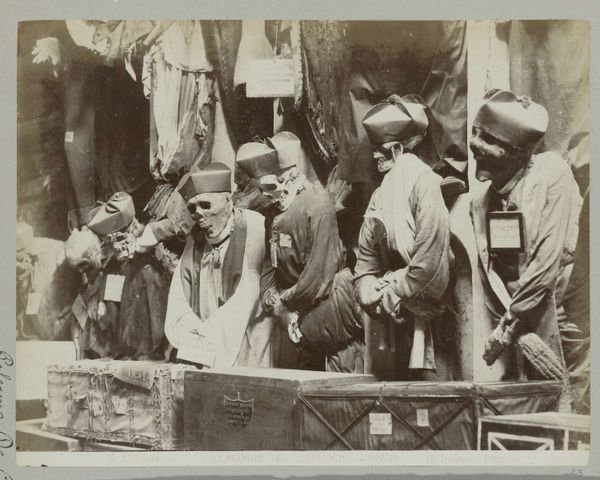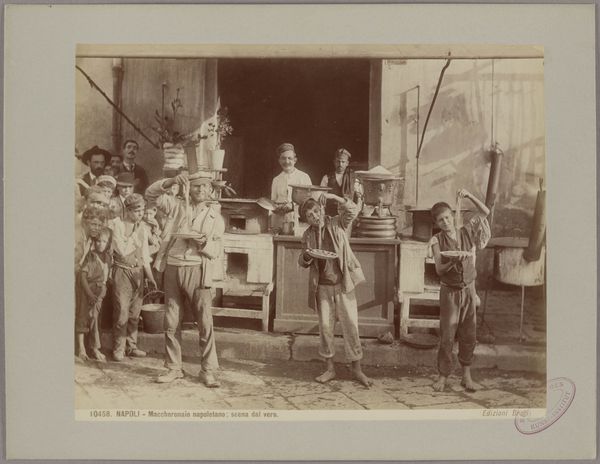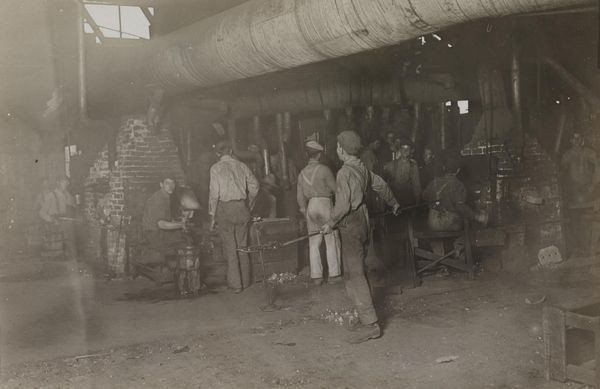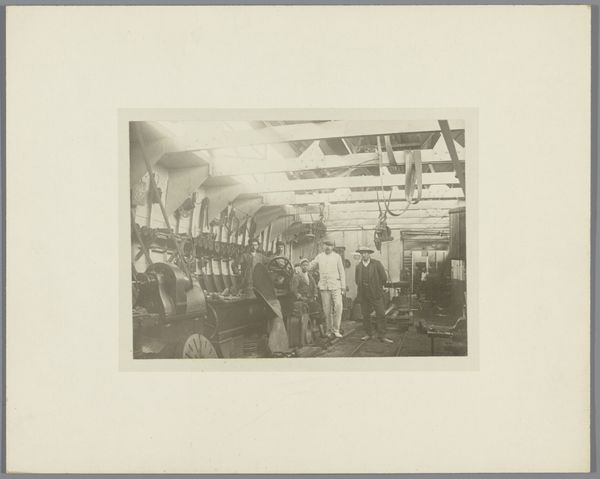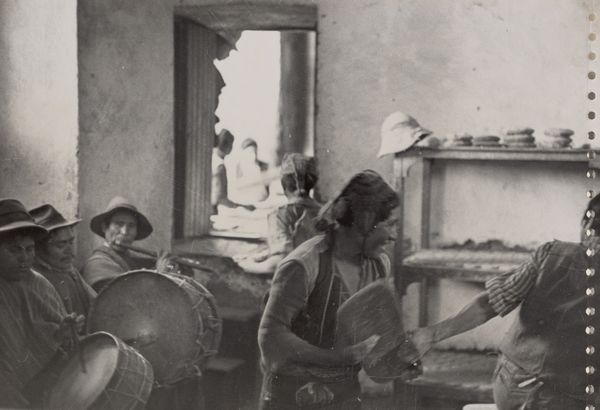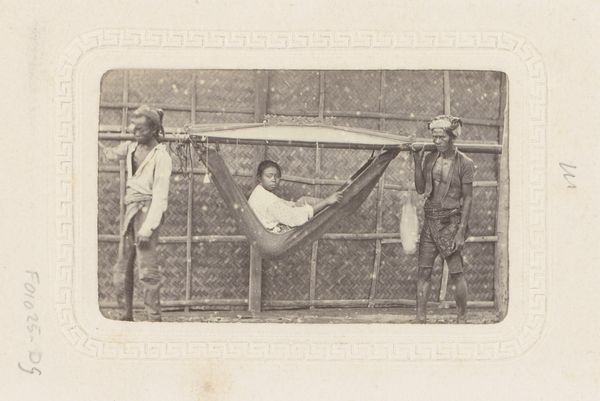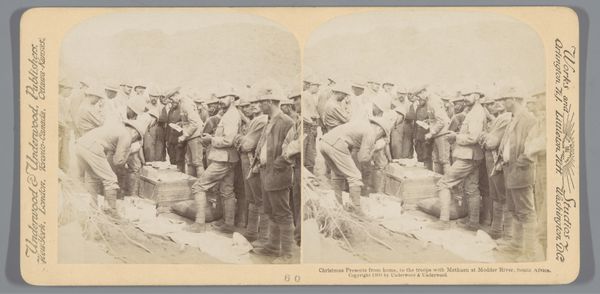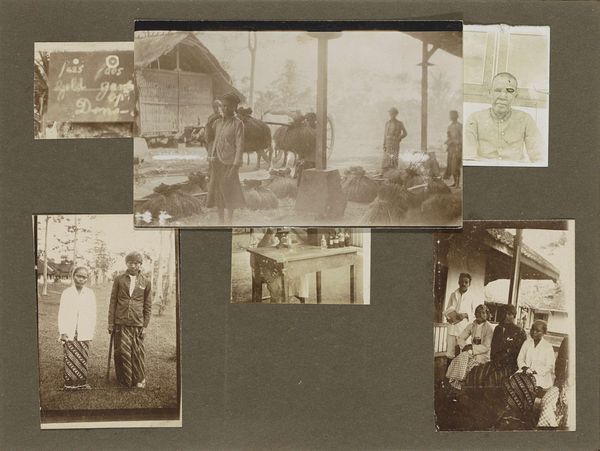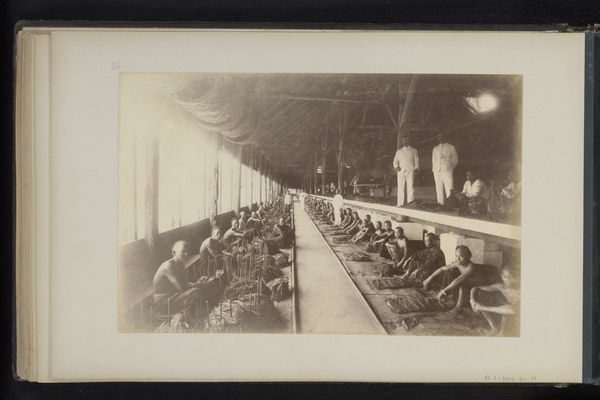
Catacombs, Convento dei Cappucini, Palermo 1895
0:00
0:00
photography, gelatin-silver-print
#
portrait
#
sculpture
#
photography
#
gelatin-silver-print
#
italian-renaissance
#
statue
Dimensions: 18.6 x 25.3 cm (7 5/16 x 9 15/16 in. )
Copyright: Public Domain
Curator: This is a gelatin-silver print entitled "Catacombs, Convento dei Cappucini, Palermo," captured in 1895 by Eugenio Interguglielmi. The work currently resides here at the Metropolitan Museum of Art. What’s your initial impression? Editor: A rather morbid fashion show, wouldn't you say? It strikes me as an unnerving tableau vivant of the deceased, yet arranged with a strange sense of order and perhaps even… dignity? Curator: Indeed. The image captures a section of the Capuchin Catacombs in Palermo, a place where the bodies of deceased monks, clergy, and upper-class citizens were preserved and displayed. What's particularly striking, in my opinion, is the blending of religious ritual and social display. It reflects the socio-cultural landscape of the time. Editor: The arrangement definitely evokes particular, repetitive archetypes. Note the garments on these preserved figures; these aren’t simply shrouds but vestments reflecting roles, status, even identities sustained beyond life. The catacombs themselves serve as powerful symbols, reflecting a desire to mediate the boundary between the living and the dead, or life and what comes next. Curator: Exactly. And it was as much about preserving memory and social status as it was about religious beliefs. Think about the social hierarchy, quite literally frozen in time. The Catacombs were not merely a burial site, but also a social institution, a place for families to visit and maintain connections with their deceased relatives and, I suppose, maintain their legacies. Editor: Note how this relates to traditional iconography around death and the afterlife: eternal vigilance, everlasting life through ritual preservation. These symbols can be traced throughout cultures—consider ancient Egyptian practices. The photo’s monochrome further amplifies this mood, adding a timeless dimension. Curator: It highlights the spectacle inherent in death rituals. In a way, Interguglielmi’s work freezes a peculiar moment of performance – the performative aspects of both grief and societal status. I'd argue this photograph becomes a document of a cultural obsession with the visible presentation of mortality. Editor: An obsession indeed, a fascination that bridges cultural epochs through imagery. The emotional power resides in this blend: horror at mortality itself combined with an awe of preserved identities. Curator: A potent visual record, reflecting not just the era but also our own enduring contemplations on mortality and remembrance. Editor: Ultimately, this photo pushes us to confront and consider not just death itself, but all we layer onto it: legacy, fear, faith.
Comments
No comments
Be the first to comment and join the conversation on the ultimate creative platform.
